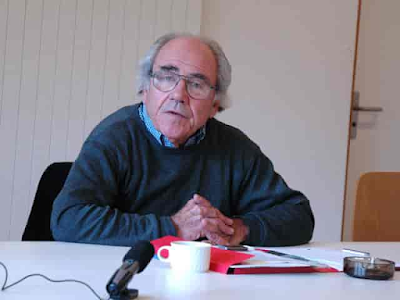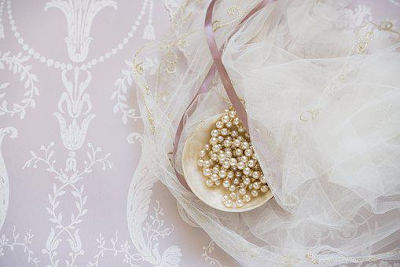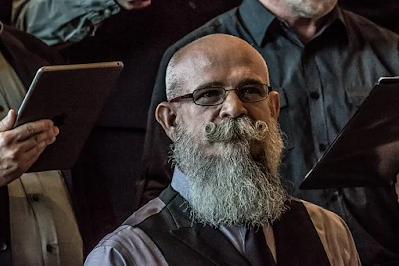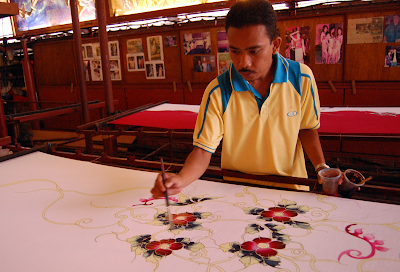Featured
- Get link
- X
- Other Apps
ART DECO AND ART NOUVEAU
Between 1895 and 1905, art nouveau design pervaded all forms of contemporary, premium European decorative arts.
Its undulating vegetal shapes and beautiful floral swirls were also a creative gift to Parisian couturiers, and the art nouveau style was vigorously embraced for seasonal, high-fashion usage until approximately 1908 or 1909.
Evening gowns were the most luxuriously art nouveau-inspired.
Evening gowns were adorned with a plethora of silk brocade, appliqué, embroidery, and lace.
The designers created art nouveau swirls around the voluptuousness of the trendy form, which was curvaceously sculpted by "S"-bend corsets, from neckline to hem.
Even fitted woolen walking outfits were embellished with appliqué swirls.
The style's popularity had diminished by 1907–1909, and was replaced by a more upright figure designed with a geometric simplicity borrowed from the Vienna Werkstatte, a fashion borrowing from Gaby's Les Modes of August 1909, Toilettes pour Le Casino.
Historical Information.
This appropriation of art nouveau style occurred at a pivotal point in the history of couture, when the Chambre Syndicale de la Couture Parisienne firmly created a unified business organization.
Paris couturiers clothed the spouses of the richest international plutocrats, as well as the famous actors of the Paris theater, in a way that was unrivaled anywhere in the Western world, even in Japan and tsarist Russia.
Commercial clientele included some of the world's most prestigious department shops.
The "look" of art nouveau was at the leading edge of contemporary design.
Only the most trendy wore it in its most extreme form, while others opted for more moderate variants.
Fashion publications such as Les Modes and middle-class periodicals such as The Ladies Field and La Mode illustrée helped to promote these trends over the world.
An art nouveau ball gown by Maggy Rouff with full-length swirls in silver and diamante on a straw-colored silk ground finished with alençon lace was published in Les Modes in July 1902.
From the House of Worth (whose designer was then Jean-Philippe Worth) to the salons of Doucet, Maggy Rouff, Jeanne Paquin, and Laferriere, to name a few, all of the top twenty or so Paris salons were developing art nouveau trends starting in 1895.
Season after season, they introduced art nouveau–inspired clothing to the worldwide fashion industry.
The renowned fashion collections of museums in Paris and the United States have examples.
High Art and Popular Versions
The style was watered down but clearly visible within middle-class levels of ready-to-wear manufacture (for department stores and top levels of wholesale manufacturers), as in a tailored woolen walking costume featured in La Mode illustrée, journal de la famille in January 1901.
The swirl, on the other hand, did not reach the lowest levels of mass production of customized apparel for women.
There was no trimming or embellishment at the level of John Noble's Half Guinea Costume, as shown in the Lady's Companion of September 1896.
Consumers were concerned with nothing more than a vaguely elegant shape and concerns of durability when the product was described as "dainty and robust." Following the death of art nouveau as a fashion inspiration, Parisian couture houses used art deco style to inspire the next fashion trend.
There were two stages to this.
- The first was designed around neoclassical/oriental/peasant style and operated from from 1910 to 1924.
- The second, which lasted from roughly 1924 to 1930, was a more minimalist style with modernist design elements.
The first art deco fashion phase was headed by Paul Poiret.
Even before the Ballets Russes came in Paris in 1909, his life was consumed with orientalism.
With its less-structured shape and delicately layered exotic design, he debuted his slender, basic, high-waisted collection in 1908.
Purples, pinks, blues, greens, and golds were used by Poiret since he was a collector of fauve paintings.
Poiret's love of orientalism, chinoiserie, European peasant, and North African style gave the cut and embellishment a new strong simplicity.
With the use of light silks, gold tassels, turbans, tunic skirts, and daring use of im broidery, his 1911 One Thousand and One Night Ball sparked a long-lasting fad for the exotic.
Other couturiers such as Jeanne Lanvin, Lucile, and the Callot Soeurs, who all developed variations of the thin, high waisted, and often luxurious exotic appearance, forced Poiret to share his spotlight.
Phase Two of Art Deco.
From about 1924, Parisian fashion evolved into the hip, less garçonne appearance, which was mirrored in the new sporting couture customer, who had a flat chest, bobbed hair, and a less socially constrained lifestyle.
Jean Patou and Chanel were among the new generation of important designers who drew inspiration from Sonia Delaunay's even more radical Orphic cubist designs.
Madeleine Vionnet perfected her bias cut, while Lelong created the first ready-to-wear collection from a couture salon.
Despite being made of the finest wool or the most sophisticated gilded, flowered Lyon silks and embellished with complex beading or tucking to identify their couture provenance, these short-skirted, simple art-deco garments were always made from the finest wool or the most sophisticated gilded, flowered Lyon silks and embellished with com plex beading or tucking to identify their couture provenance.
When Patou shortened the hemline in 1929, he put an end to the style.
Fashion Illustration
A generation of fashion illustration of enduring quality and notoriety was created by a group of young striving fauve painters.
This time established the careers of Barbier, Lepape, Iribe, Dufy, Erté, Marty, Benito, and Bonfils, thanks to Paul Poiret's original idea and his pochoir printed Les Choses de Paul Poiret in 1909 and 1911.
There are two types of versions: couture and popular.
The short skirt and low waistline were imitated at all levels of the fashion industry, even the cheapest ready-to-wear, as seen in catalogs from Sears and Roebuck and English ready-to-wear wholesalers.
The cinema, new affordable fashion periodicals, home dressmaking, and the vast availability of fake silk or rayon helped to extend fashion knowledge and consumption options to a large audience (albeit still an unreliable fashion fabric).
All of this boosted demand for mass-produced, machine-made ready-to-wear, and "up and coming" working-class females on both sides of the Atlantic embraced moderated art deco fashion despite their restricted financial resources.
Retro Versions
Both art nouveau and art deco styles have seen fashion revivals, despite the fact that historical styling is seldom replicated exactly.
As the maxi hemline gained popularity in the late 1960s, new psychedelic trends in Britain were related to a subversive nostalgia for the imperial Edwardian era, art nouveau, and Aubrey Beardsley's work.
The original art nouveau brand emblem chosen by Barbara Hulanicki for her fashion firm Biba, which was created in 1964, exemplifies this.
This is evident in her trendy evening silhouette's art nouveau romanticism and use of feather boas, yet she combined this with early 1930s style in her use of slinky satins and the bias cut.
In 1996–1997, John Galliano debuted a number of Edwardian-inspired looks.
Art Deco
The legendary ideal of free, young gai ety, glamour, and sensuality is considerably more firmly engraved in the public psyche than art deco design.
This image has been bolstered by a slew of successful films set in the 1920s, including Singin' in the Rain (1952), Some Like It Hot (1959), and Thoroughly Modern Millie (1967), all of which were staged in New York and London in 2002 and 2003, respectively.
In 1974, a film adaptation of F. Scott Fitzgerald's The Great Gatsby was released, while the Chicago of 2002 and an Art Deco exhibition at the Victoria and Albert Museum the following year heightened popular interest.
Yves Saint Laurent spearheaded the mid-1960s renaissance with his African art deco collection in 1967, which was well suited to the period's youthful, androgynous look.
Galliano revived the flapper style in 1994 at the start of the century, while Diane von Furstenberg displayed flapper dresses with low waists and beaded fringe in New York on September 17, 2003.
See also:
Appliqué; Doucet, Jacques; Galliano, John; Orientalism; Poiret, Paul; Saint Laurent, Yves.
References And Further Reading:
Benton, Charlotte, Tim Benton, and Gislaine Wood. Art Deco, 1910–1939. London: Victoria and Albert Museum, 2002.
Charles-Roux, Edmonde. Chanel and Her World. New York: Vendome Press, 1981.
Coleman, E. A. The Opulent Era, the Work of Worth, Doucet and Pingat. London and New York: Thames and Hudson, Inc., Brooklyn Museum, 1989.
Greenhalgh Paul, ed. Art Nouveau: 1890–1914. London: Victoria and Albert Museum, 2000.
Musée de la Mode et du Costume. Paul Poiret et Nicole Groult: maîtres de la mode art deco. Paris: Paris Musées, 1986.
Troy, Nancy J. Modernism and the Decorative Arts in France: Art Nouveau to Le Corbusier. New Haven, Conn.: Yale University Press, 1991.
Couture Culture, A Study in Modern Art and Fashion. Cambridge, Mass.: Massachusetts Institute of Technology, 2002.
White, Palmer. Poiret. London: Studio Vista, 1974.
- Get link
- X
- Other Apps

















